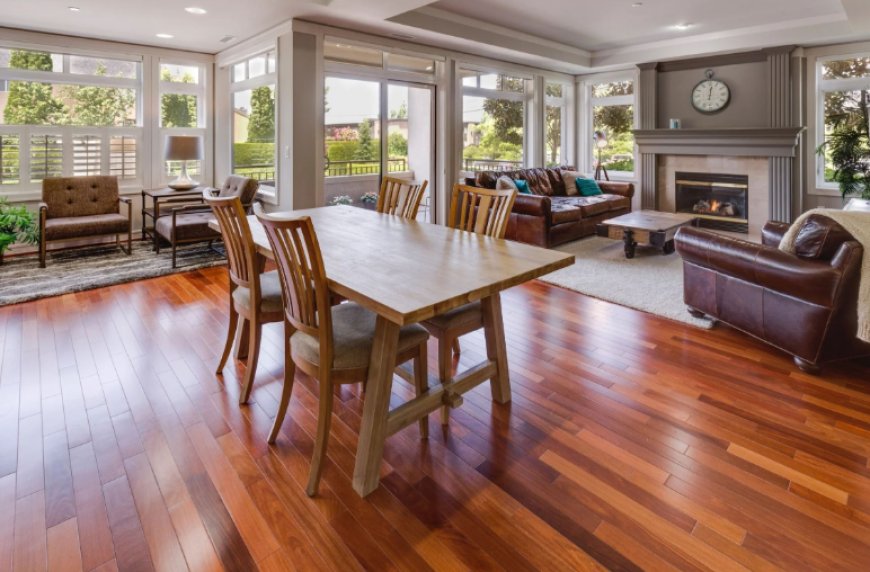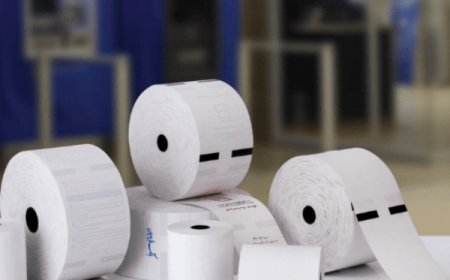Common Mistakes to Avoid During Hardwood Floor Installation
Avoid costly flooring errors with our guide on common hardwood floor installation mistakes. Learn expert tips from MC Caman Hardwood Flooring for a flawless finish.

Installing hardwood floors is one of the most rewarding upgrades you can make to your home. Not only do they add warmth and timeless beauty, but they also increase your propertys value. However, the installation process isnt as simple as it might seem. Even small mistakes during hardwood floor installation can lead to costly repairs or replacements down the road.
Whether you're tackling the project yourself or hiring professionals like MC Caman Hardwood Flooring, it's important to understand the most common pitfalls and how to avoid them. In this guide, well walk you through these mistakes and provide practical tips to help ensure your installation goes smoothly and stands the test of time.
Why Proper Installation Matters
Before diving into the most common mistakes, lets talk about why proper installation is crucial:
-
Durability: Well-installed hardwood floors last for decades.
-
Appearance: A poor installation can result in visible gaps, buckling, or uneven surfaces.
-
Comfort & Safety: Uneven boards can cause trips or make walking uncomfortable.
-
Resale Value: Homebuyers notice quality workmanship, especially in flooring.
Avoiding installation mistakes isnt just about aestheticsits about protecting your investment.
1. Skipping the Acclimation Process
What it is: Hardwood is a natural product that expands and contracts based on moisture levels in the air. When you bring flooring into your home, it needs time to adjust to the rooms temperature and humidity before installation.
The mistake: Many people skip this step, especially during DIY projects. This can lead to cupping, buckling, or gaps as the wood adjusts post-installation.
How to avoid it: Let the flooring acclimate for at least 37 days (or more depending on climate) in the room where it will be installed. Follow manufacturer guidelines and ensure the room is at normal living conditions during this time.
2. Failing to Prep the Subfloor Properly
What it is: The subfloor is the foundation that your hardwood flooring sits on. If its not clean, dry, and level, it can affect the entire installation.
The mistake: Installing hardwood over a dirty or uneven subfloor can cause squeaking, shifting boards, or uneven surfaces.
How to avoid it:
-
Clean the subfloor thoroughly.
-
Use a moisture meter to ensure it's dry.
-
Level it outfill in dips and sand down high spots.
-
If necessary, install an underlayment or vapor barrier.
Tip: Companies like MC Caman Hardwood Flooring always inspect the subfloor before installation, ensuring a solid base for long-term performance.
3. Ignoring Moisture Levels
What it is: Moisture and hardwood flooring do not mix well. Excess moisture can cause the boards to swell, buckle, or develop mold.
The mistake: Many homeowners forget to test for moisture in the subfloor and hardwood boards.
How to avoid it:
-
Always test moisture levels with a moisture meter.
-
Maintain indoor humidity between 35-55%.
-
If you live in a humid climate, consider engineered hardwood or use a dehumidifier.
-
Use a proper vapor barrier over concrete subfloors.
4. Not Leaving Expansion Gaps
What it is: Wood expands and contracts naturally. Leaving a gap around the rooms perimeter allows the floor to shift without damage.
The mistake: Installing boards flush against the wall without a gap can lead to buckling or warping as the wood expands.
How to avoid it:
-
Leave a to gap between the flooring and the walls or fixed objects.
-
Use spacers during installation to keep this consistent.
-
Cover the gap later with baseboards or shoe molding.
5. Choosing the Wrong Type of Wood
What it is: Not all hardwoods are suitable for every room or lifestyle.
The mistake: Using softwoods like pine in high-traffic areas can lead to dents and scratches. Installing solid wood in a moisture-prone basement can spell disaster.
How to avoid it:
-
Match the wood type to the rooms function.
-
For moisture-prone areas, choose engineered hardwood.
-
Consider your lifestylepets, kids, and heavy foot traffic call for durable wood like oak or hickory.
Tip: Consult experts like MC Caman Hardwood Flooring for advice on the best wood species for your home.
6. Incorrect Nailing or Gluing Techniques
What it is: The way you attach the boards to the subflooreither by nails, staples, glue, or floatingmust be done correctly.
The mistake: Incorrect nail spacing, wrong adhesive use, or insufficient glue coverage can lead to loose or noisy boards.
How to avoid it:
-
Follow the manufacturers guidelines for fasteners or adhesives.
-
Make sure nails are driven at the correct angle and depth.
-
If gluing, use the recommended adhesive and spread it evenly.
7. Misaligned Boards
What it is: Laying the boards in a straight, consistent pattern is key to a clean look.
The mistake: Poor alignment can lead to awkward transitions, gaps, or crooked-looking floors.
How to avoid it:
-
Start with a perfectly straight reference line (chalk lines help).
-
Stagger the boards properly to create a natural pattern.
-
Always check alignment as you godont wait until the end.
8. Installing in the Wrong Direction
What it is: The direction you lay hardwood planks can affect the rooms appearance and floor stability.
The mistake: Installing parallel to the shortest wall may make the room look smaller and can reduce structural stability if not aligned with joists.
How to avoid it:
-
Run boards perpendicular to floor joists for better support.
-
In long rooms, install parallel to the longest wall for a visually spacious effect.
-
Consider natural light directionplanks look best when laid in the same direction as the light.
9. Poor Transition Between Rooms
What it is: Transitions are where two types of flooring meetlike hardwood and tile or carpet.
The mistake: Not using a proper transition strip can create tripping hazards or unsightly seams.
How to avoid it:
-
Use T-molding or transition strips to create smooth, safe transitions.
-
Match wood tones and thickness as closely as possible for visual harmony.
-
Dont rush transitionsmeasure and plan carefully.
10. Skipping the Final Finish (or Doing It Wrong)
What it is: If you're installing unfinished hardwood, it will need sanding and finishing after installation.
The mistake: Rushing this step or using poor-quality products can affect the look and durability of your floor.
How to avoid it:
-
Sand thoroughly but evenly to avoid dips or uneven sheen.
-
Choose a durable finish suited for your lifestyle (e.g., water-based polyurethane for faster drying and less odor).
-
Apply multiple coats as needed and allow full curing time.
Note: Pre-finished floors from MC Caman Hardwood Flooring can save time and reduce mess if you prefer a simpler route.
Final Thoughts: Invest in Expertise
Hardwood flooring is a long-term investment that requires careful planning and execution. While DIY installations may seem appealing, the risks of making costly mistakes are high. That's why working with experienced professionals like MC Caman Hardwood Flooring is a smart choice. Their team brings years of experience, precision craftsmanship, and a commitment to getting the job done right the first time.
By avoiding these common mistakes, youll ensure your hardwood floors not only look beautiful but also last for years to come.
FAQs
1. How long should hardwood flooring acclimate before installation?
Typically, hardwood should acclimate for 3 to 7 days in the installation room. However, always follow the manufacturer's guidelines and test moisture levels to be sure.
2. Can I install hardwood flooring over concrete?
Yes, but only engineered hardwood is recommended for concrete subfloors. A moisture barrier is also essential to prevent water damage.
3. Whats the best way to clean hardwood floors after installation?
Use a soft broom or vacuum for daily cleaning and a damp (not wet) mop with hardwood floor cleaner for deeper cleaning. Avoid steam mops or harsh chemicals.








































